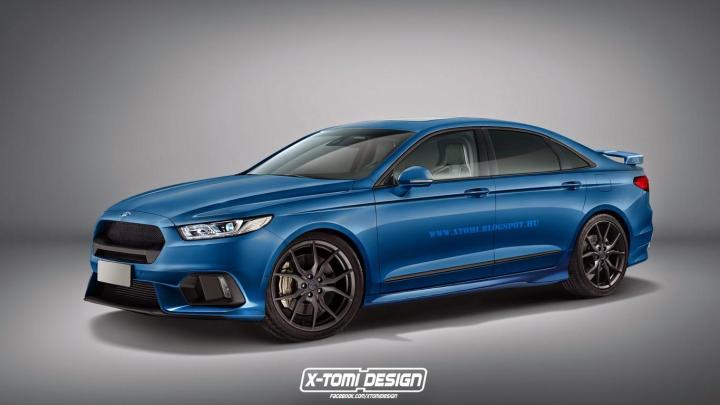
X-Tomi Design takes the latest version of Ford’s full size sedan, revealed at the Shanghai Auto Show, and gives it an aggressive makeover heavily inspired by the Focus RS. This is most apparent with the largely flared out front lip and facia apertures. They even manages to clean incorporate the lower front floodlights from the RS as well.
Around back, the bit we can see reveals a more aero-focused rear bumper with more aggressive contours to match the sporty side skirts. The Taurus looks even meaner and lower with its regular wheels swapped out for some impressive black alloys. A diminutive RS-badged rear wing tops off the whole package.

Is such a corn-fed Taurus in the works? Probably not, we’re sad to say. While the mighty sedan is the basis for law enforcement’s beloved Ford interceptor, the rest of its customers aren’t really looking for something so overtly mean.
The key word here is “overtly.” Taurus buyers so love having the SHO as their sleeper sports car, and the 3.5-liter Ecoboost V6 saddled in the current iteration cooks up a very satisfying 365 horsepower. The latest generation Taurus will offer the 2.7-liter Ecoboost V6 exclusively in China. We’ve yet to hear news of a U.S. version, but when we do, we expect some stealth SHO muscle to accompany it, not the in-your-face RS version you see before you.
Editors' Recommendations
- Ford is only making 2,000 of these matte black F-150 Lightnings. Here’s your first look
- Ford is using airbag material to make medical gowns for health care workers
- Ford wants to trick your body into thinking it’s warm to maximize EV range
- There is no way to say pickup truck in emoji, and Ford wants to change that
- Ford’s Dr. Derriere makes your car seats comfy, no ifs, ands, or butts about it


